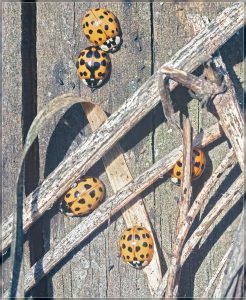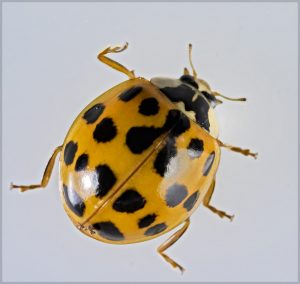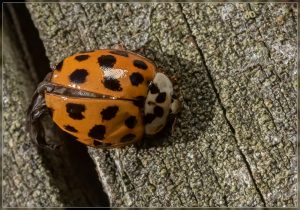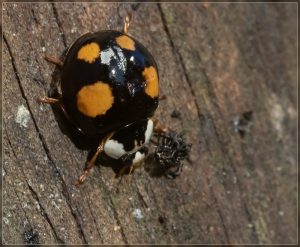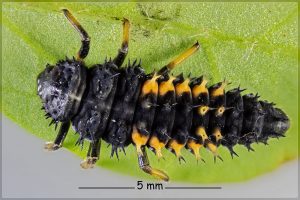Well it had to happen. Travis is now host to one of the most invasive ladybird species, the Harlequin Ladybird, Harmonia axyridis.
First found in New Zealand in 2016 in Auckland it has rapidly spread down the entire North Island and is now also present down most of the east coast of the South Island.
They are native to eastern Asia and because of their voracious appetites for aphids were introduced into the US and parts of Europe as a bio control agent.
They have now spread across all of North America and most of central and South America. Also most of Europe and the UK.
Because of it’s voracious appetite it can out compete other species of ladybird (and is known to eat ladybird eggs and larvae) for the available food supply causing population crashes in native species.
It is also resistant to diseases that kill other ladybird species.
Good reasons why this is known as one of the worlds most invasive insects.
This is a really variable species when it comes to markings ranging from red and orange with few to many black spots through to black with a varying number of orange and red spots.
They are quite a large ladybird adults being in the 5 – 8mm range.
One of the better ways of telling this species from others is they have a M shaped black mark on the segment behind the head (pronotum) as seen from above looking forward. This of course is of no use when looking at the black morphs.
In this case most of them will have some white on the pronotum.
Another good id feature is the leg colour, they are a browny red as are the antennae.
Once you’ve seen a few of these critters telling them apart from other species becomes easy.
Time will tell how nice these guys play with our 2 and 11 spotted ladybird population.
There’s sure a lot of Giant Willow Aphid to eat.
A couple of good resources for more info is the Landcare factsheet
https://nzacfactsheets.landcareresearch.co.nz/factsheet/InterestingInsects/Harlequin-ladybird—Harmonia-axyridis.html
And of course Wikipedia
https://en.wikipedia.org/wiki/Harmonia_axyridis

